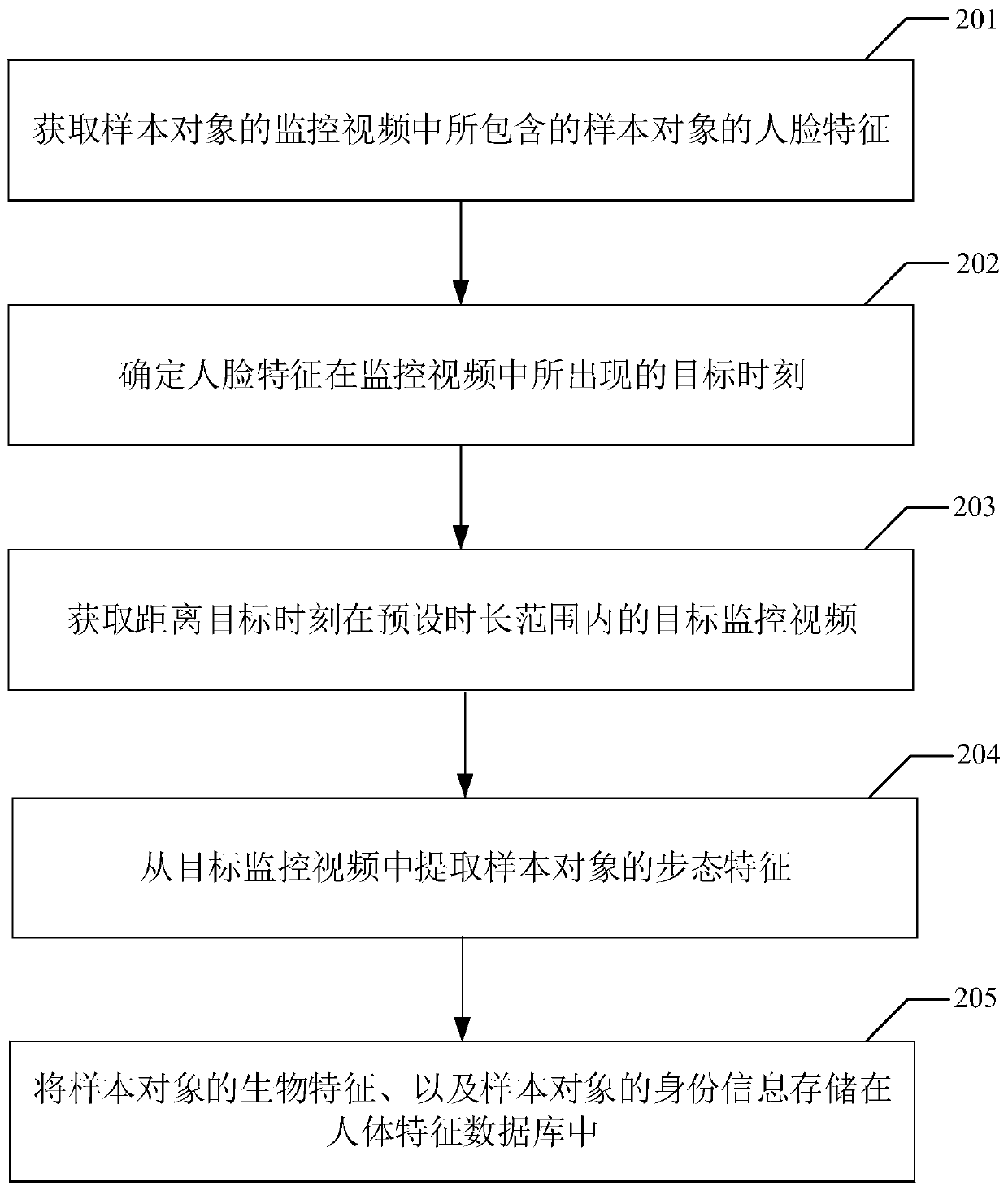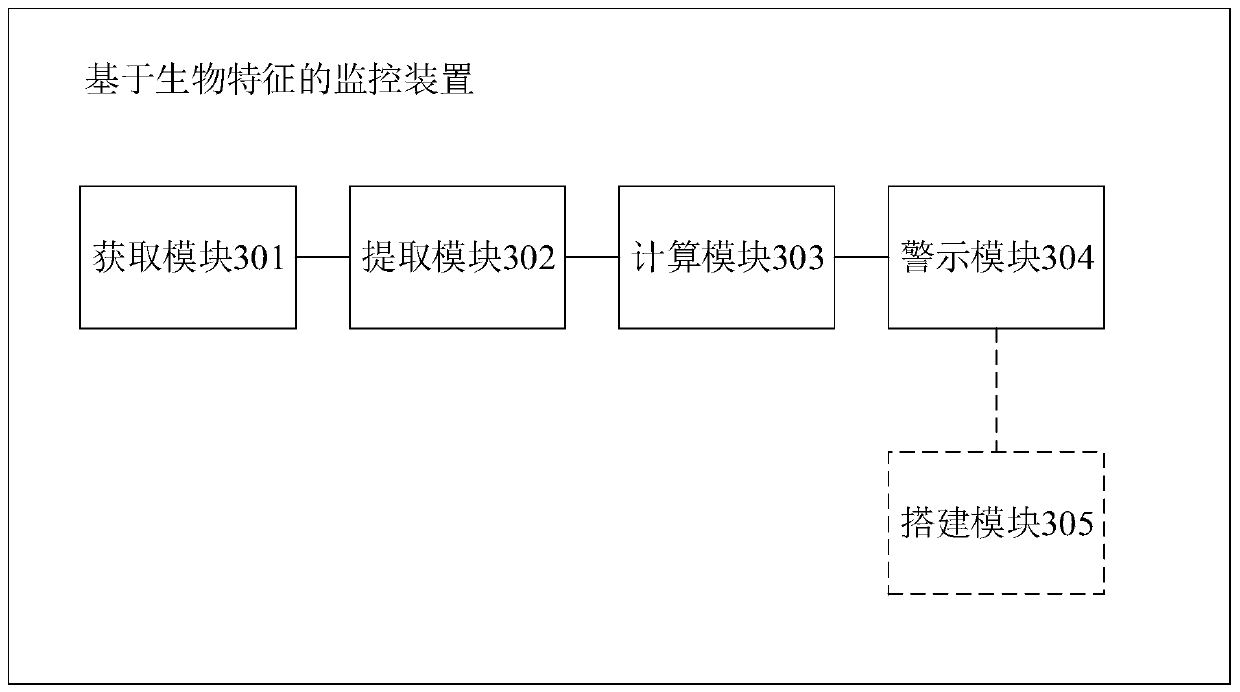Monitoring method and device based on human body characteristics
A technology for monitoring human body characteristics and targets, applied in the computer field, can solve the problems of too much time for transmitting monitoring video and the inability to realize real-time recognition of gait characteristics of monitoring objects, so as to achieve the effect of reducing time consumption, improving monitoring efficiency and realizing real-time recognition.
- Summary
- Abstract
- Description
- Claims
- Application Information
AI Technical Summary
Problems solved by technology
Method used
Image
Examples
Embodiment 1
[0061] see figure 1 As shown, it is a schematic flowchart of a monitoring method based on human body characteristics provided by the embodiment of the present application, including the following steps:
[0062] Step 101. Obtain the human body characteristics of the target object, and receive the video image with the monitored object filtered out from the surveillance video uploaded by the surveillance device.
[0063] Wherein, the human body features include gait features and / or facial features.
[0064] Step 102, extracting human body features of at least one surveillance object included in the video image.
[0065] Step 103, calculating the first feature similarity between the human body features of the target object and the human body features of each monitored object.
[0066] Step 104: Determine the monitored object whose first feature similarity is greater than the first preset similarity as the target monitored object, and send a warning message to the target monitor...
Embodiment 2
[0093] This embodiment also provides a monitoring device based on human body characteristics, see image 3 As shown, it is a schematic diagram of the architecture of a monitoring device based on human body characteristics provided by the embodiment of the present application, including an acquisition module 301, an extraction module 302, a calculation module 303, a warning module 304, and a construction module 305, specifically:
[0094] The obtaining module 301 is used to obtain the human body characteristics of the target object, and receive the video image with the monitoring object screened from the monitoring video uploaded by the monitoring device;
[0095] An extraction module 302, configured to extract human body features of at least one monitoring object contained in the video image;
[0096] A calculation module 303, configured to calculate a first feature similarity between the human body features of the target object and the human body features of each of the monit...
Embodiment 3
[0117] Based on the same technical idea, an embodiment of the present application also provides an electronic device. refer to Figure 4 As shown, it is a schematic structural diagram of an electronic device 400 provided in the embodiment of the present application, including a processor 401 , a memory 402 , and a bus 403 . Among them, the memory 402 is used to store execution instructions, including a memory 4021 and an external memory 4022; the memory 4021 here is also called an internal memory, and is used to temporarily store calculation data in the processor 401 and exchange data with an external memory 4022 such as a hard disk. The processor 401 exchanges data with the external memory 4022 through the memory 4021. When the electronic device 400 is running, the processor 401 communicates with the memory 402 through the bus 403, so that the processor 401 executes the following instructions:
[0118] Obtain the human body characteristics of the target object, and receive t...
PUM
 Login to View More
Login to View More Abstract
Description
Claims
Application Information
 Login to View More
Login to View More - R&D
- Intellectual Property
- Life Sciences
- Materials
- Tech Scout
- Unparalleled Data Quality
- Higher Quality Content
- 60% Fewer Hallucinations
Browse by: Latest US Patents, China's latest patents, Technical Efficacy Thesaurus, Application Domain, Technology Topic, Popular Technical Reports.
© 2025 PatSnap. All rights reserved.Legal|Privacy policy|Modern Slavery Act Transparency Statement|Sitemap|About US| Contact US: help@patsnap.com



